On the Origin of Species
Thoughts on the dive watch at 70: the good, the bad, and the questionable.
80 years ago, in the middle of a bloody World War, French naval officer, Jacques-Yves Cousteau and engineer, Emile Gagnon, filed a patent for a “demand regulator,” a deceptively simple invention that became one of the most profound of the twentieth century. The “aqua-lung” effectively cut the cord for divers, who could now swim freely with their air on their backs instead of supplied from the surface through a long hose. It allowed for nimble and versatile exploration, but also meant keeping track of their own dive time and air supply, and out of necessity, another invention was born ten years later.
1953 is widely considered the dawn of the dive watch era. That was the year three companies debuted their dedicated underwater timepieces—Blancpain with its Fifty Fathoms, Zodiac with the Sea Wolf, and Rolex with the Submariner. 2023 marks the 70th anniversary of the first dive watches. Watch brands love anniversaries and we’ll no doubt see some events and commemorative watches come out this year (one has already been announced). I usually roll my eyes at these excuses for limited editions and hyperbolic marketing films, but this one feels a little more special to me. After all, I largely made a career out of reviewing dive watches. Even after hundreds of blog posts, magazine reviews, and book chapters, I still struggle to articulate why dive watches remain so popular, long after they’ve fallen out of regular use or necessity. I suspect the answer lies more in our collective unconscious than anything tangible or intrinsic to the watches themselves. Regardless, beyond their ruggedness, colorful history, versatility, and evocative nature, just consider the sheer longevity of the dive watch for a moment—seventy years. Seven-zero. Seven decades. What other manmade objects remain so popular for that long? Old Jeeps Land Rovers, wooden sailboats, maybe Leica cameras?
The original three dive watches—Sea Wolf, Fifty Fathoms, and Submariner—all still exist in some form today. I’ve dived with all of them at some point, including a couple of vintage ones. All have changed considerably in materials, construction, and quality but a diver from 1953 would instantly recognize any of them (and probably marvel at how expensive they’ve all become!). Meanwhile, countless other watches have risen from the primordial depths to evolve, and “improve” upon the original brief, or at least be a bit more distinctive. Some brands have succeeded, while others have been forgotten, like discarded shells that litter the seafloor. Looking back through the lens of this most significant anniversary of the dive watch, I’m struck by the sheer variety of design, functionality, and aesthetics of what essentially evolved out of a single, simple need 70 years ago. That same diver from 1953, seeing the breadth of watches available to him now would be astonished, perhaps a bit like Darwin stepping on to the Galapagos islands and being awed by both the variety and specificity of so many creatures there.
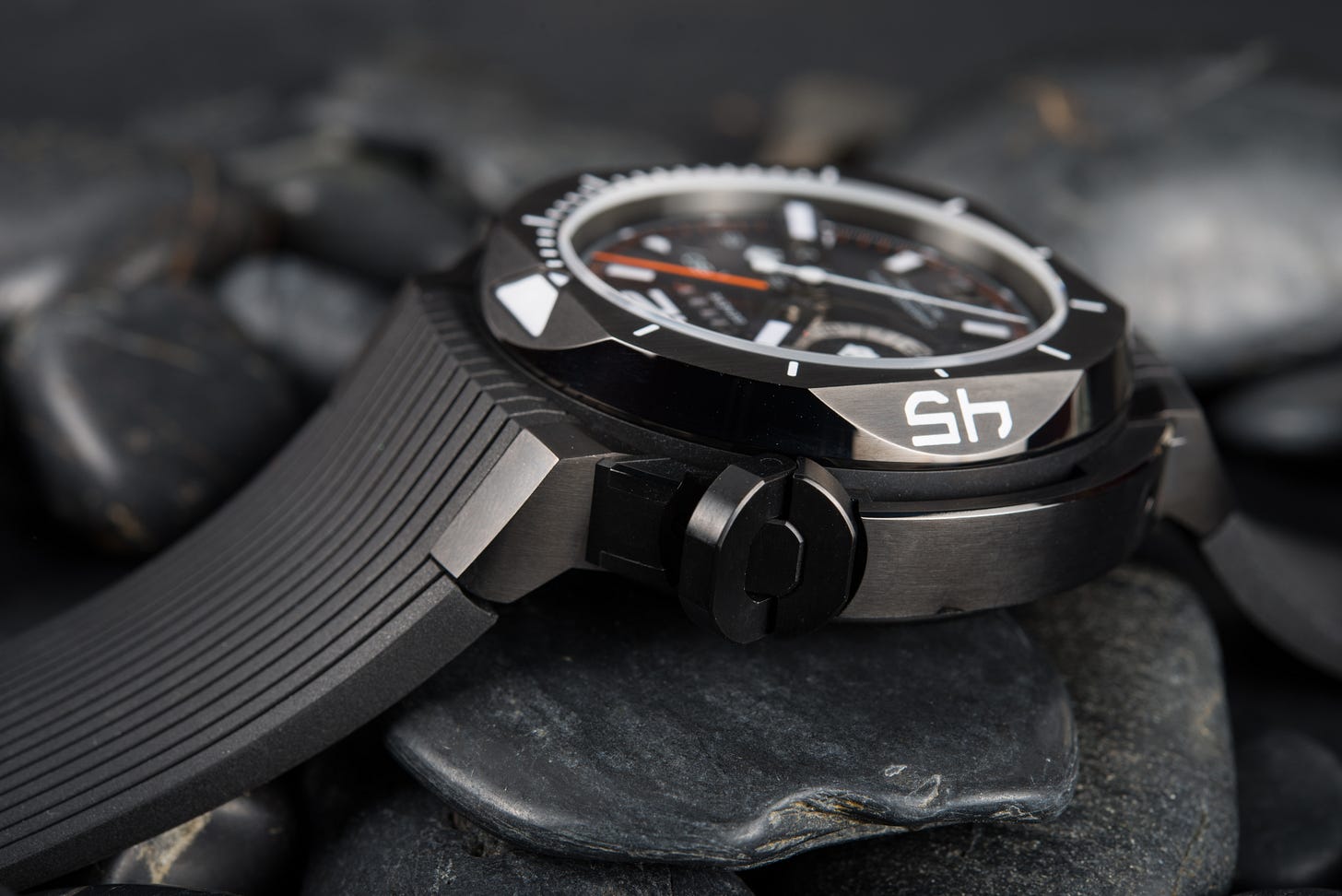
About eight years ago, I reviewed the Clerc Hydroscaph Chronograph. You’ll be forgiven for not knowing Clerc. Despite being a relatively old name in watchmaking, the defunct brand was revived in 1998 by a descendant of the company’s founder and focused on dive watches. I had a chance to visit their booth in Basel in 2015, drawn in by the deep sea submersible suspended over their display of watches. The watches looked nothing like those earliest underwater timepieces of 1953 and in fact, the only trait that hinted at its subaquatic intentions was the presence of a timing scale on a large bezel. Though not to my rather conservative taste, I borrowed a watch with an open mind.
What I discovered was that the Hydroscaph was not a watch designed based on function, at least for a diver, but on complexity for the sake of it. The bezel, octagonal in shape, was not meant to be gripped and turned by hand, but rather by turning a tiny crown on the upper left side of its bulbous case. Turning a timing ring with a crown was not anything new. Some “Supercompressor” divers had this design since the early ‘60s, but on those, the timing ring was protected under the crystal in an attempt to prevent inadvertent movement. On the Clerc, however, the crown, which was locked via an equally finicky fingernail latch, turned the outer bezel, and did so at a maddeningly slow rate. I was relatively diplomatic in my review back then, writing that, “the Hydroscaph… [conjures] the image and panache of a diving watch while being fairly unsuited for actual underwater use.” I might not be so forgiving these days. Then again, as I’ve gotten more honest in my opinions, my hard line stance on dive watches has softened.
Around the same time, I was loaned another avant-garde diver from none other than Hublot: the King Power Oceanographic 1000. It made the Clerc look like child’s play. Full of locks and levers and intermeshing crown teeth, along with an inner timing ring that couldn’t be manipulated once submerged, the watch was more like some kind of 3-D combination puzzle, perhaps for testing the effects of nitrogen at depth on a diver’s mental capacities. I took the watch diving, found it maddening in practical use, but fascinating back home under a loupe. The skill and precision of its design and manufacture still have me looking at the macro photos from that review.
As lore has it, the Omega Ploprof was developed for commercial divers working for the French firm, Comex. This was happening around the same time Rolex was sending its own leviathan, the Sea-Dweller, deep on US Navy SEALAB divers’ wrists. Both were trying to solve the issue of helium build-up inside the watch, that would pop off the crystal during decompression. Rolex’s solution was a gas relief valve on the side of the case. Omega’s was to build the watch tight enough to not let helium in at all. It would seem that the latter was the simpler, and thus better, approach. But which one prevailed? The Sea-Dweller enjoyed far wider use and greater longevity and sales. Why? I’m sure theories abound, but just looking at the watches, the Ploprof, in addition to its slab-sided shape, also added a bezel lock with a large red release button. It was big, unwieldy, unconventional, and complicated, not to mention not terribly ergonomic. Don’t get me wrong, I love the Ploprof, and owned one, but have to wonder what might have been if Omega hadn’t solved the main problem without inventing a solution to a second one that didn’t really exist.
Watchmakers seem to not be able to help themselves, or perhaps not enough of them are divers. Did any of those early Fifty Fathoms owners complain about the functionality of their watches? Did a Sea Wolf owner sketch something resembling a Clerc Hydroscaph on a cocktail napkin in Geneva and say, “this is what I need”? Did a Submariner owner wish for a red button requiring awkward contortions to turn the bezel? When I survey the arc of dive watch development, it seems like the ones that evolved slowly and iteratively, succeeded more than those that made big, bold leaps of design and gimmickry. Then again, wouldn’t the watch universe be a boring place if there hadn’t been a Ploprof, an Aquatimer with its fiddly, leaky twin crowns, or an Audemars Piguet Royal Oak Diver with its maddeningly ineffectual inner bezel? These watches remind me of some kinds of ornate birds—the quetzal, the widowbird, the peacock— laden with long, colorful feathers used to attract mates but creating snagging hazards and aerodynamic impediments. They may seem like examples of evolution to the point of the extreme and the ridiculous, and yet, we don’t watch wildlife documentaries for the common sparrow, do we?
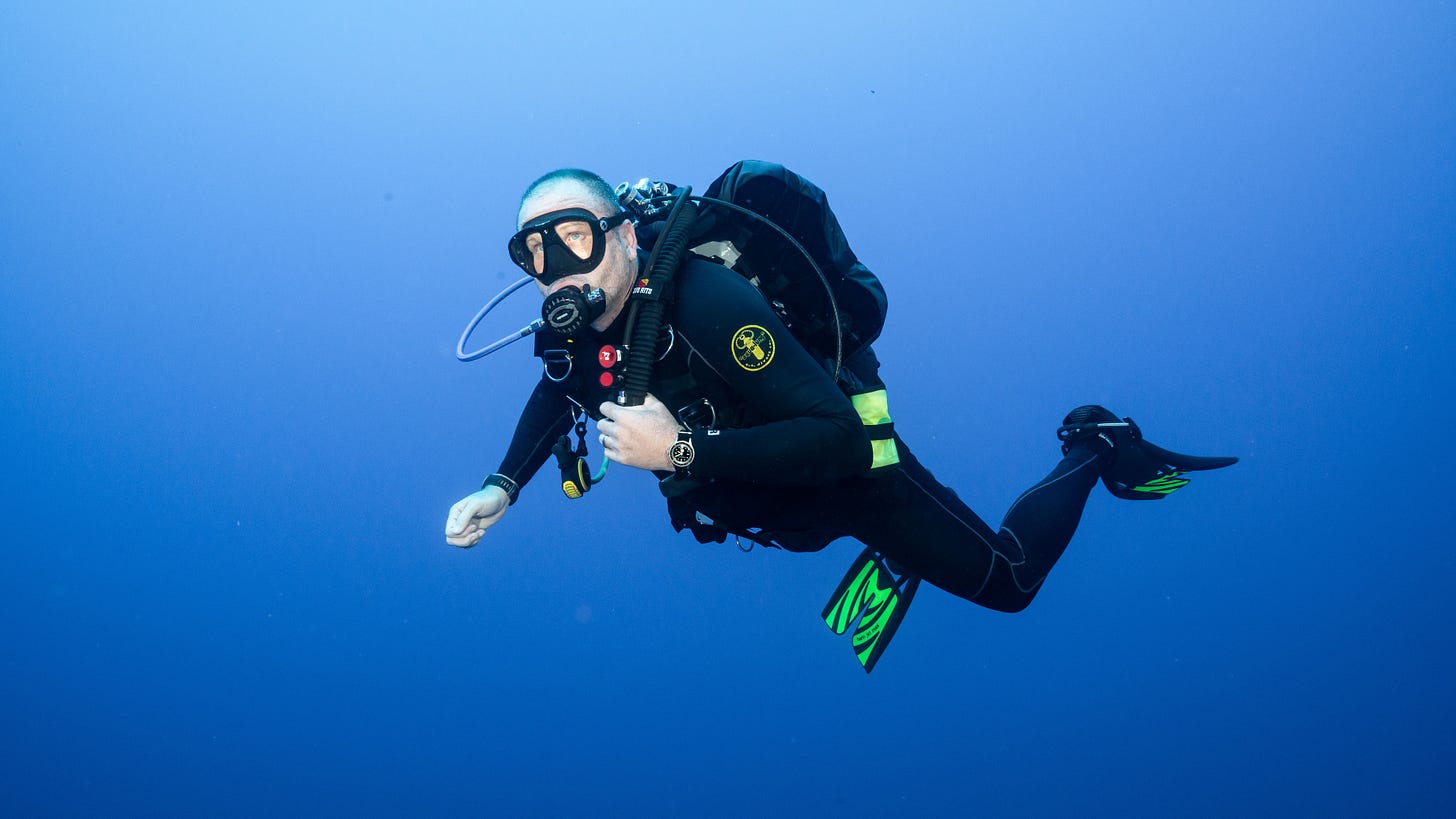
I’ll be celebrating the 70th anniversary of the first dive watch right alongside Blancpain (sooner than you might think) and I hope Rolex and Zodiac have some things up their neoprene sleeves too. Seven decades is plenty of time to work out the kinks of any design or category, right? I often write that the earliest dive watches got things right, so there’s little to improve on. Still, for those of us who love divers, we can celebrate the weird dead ends, defunct brands, and questionable design decisions (anyone seen the new Delma Quattro?) right alongside the venerable stalwarts. I may not want to time a dive with every one of them, but if it’s called a dive watch, they’re welcome at the party. Even Clerc.




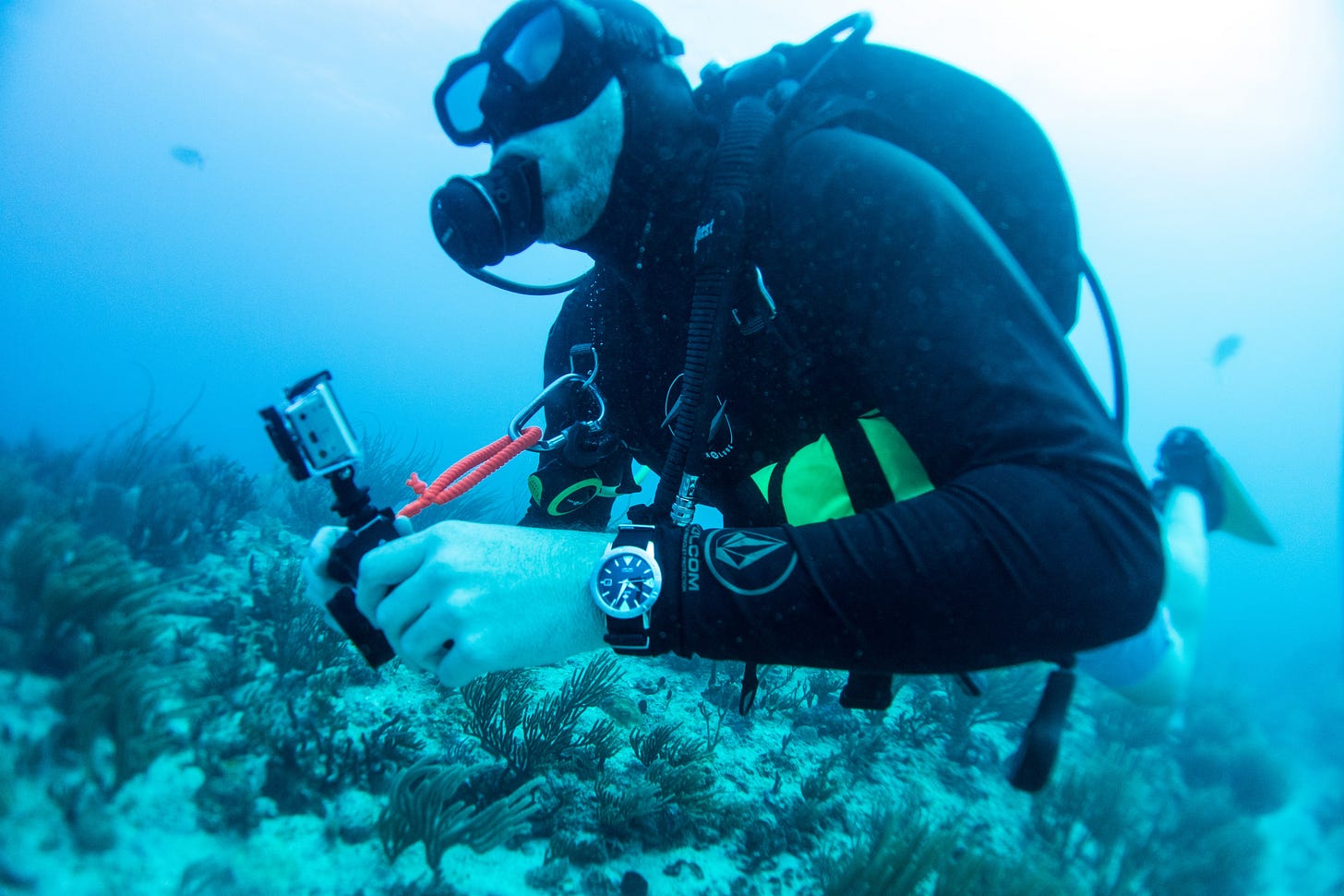
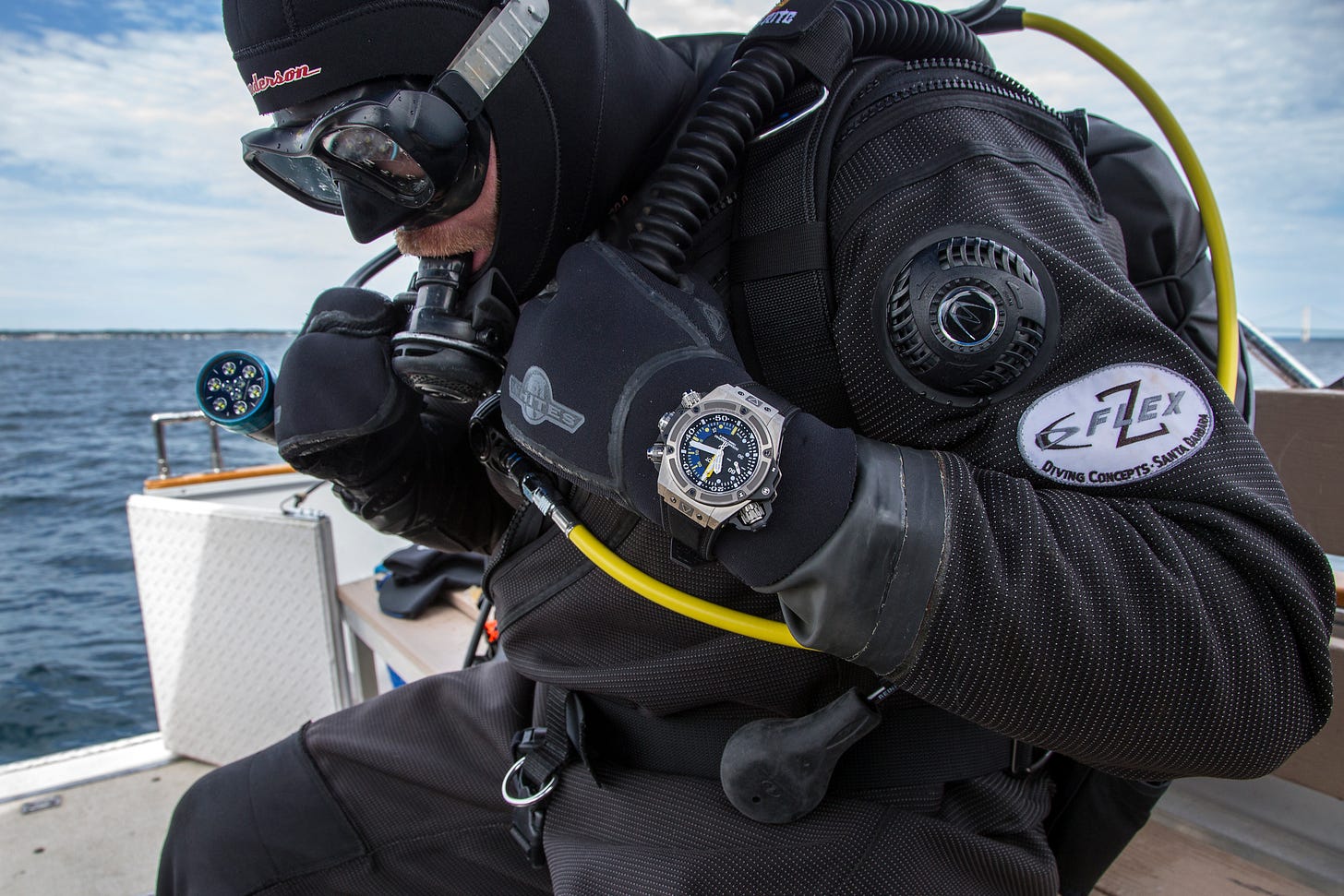
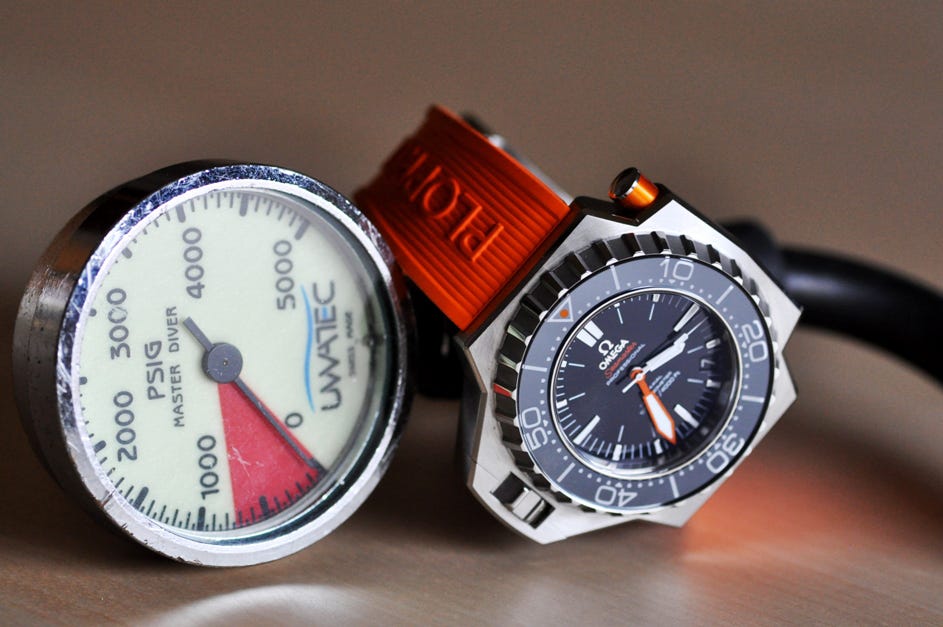
Jason,
A great piece to start the new year.
Dive watches attract us because the offer a promise of adventure. When the adventure starts, the tool part of the tool watch genre takes over and, if it doesn’t, then all that’s left is the promise not the delivery.
The only dive watch I own that has done any diving is a 1971 Bulova that wouldn’t pass any muster today. Friction bezel, push-pull crown. But, it traveled with me to a wreck site at slightly more than 30m without a problem. It did it’s job and it carries that story today without any fanfare.
Just like a pair of hiking boots or my 26 year old Jeep, it just did it’s job and still does the job. Fair enough.
As a hunting nut, I'd say the break-action shotgun is up there as well! Not much to improve on when you've got a great design.
Dive watches have always been my thing, and probably always will be. I don't fancy myself much of an adventurer, but the design has always spoken to me. I enjoy wearing the occasional field watch but there's something about a dive watch that speaks to me in ways other watch designs don't. I'm not entirely sure what it is, but it's been that way since I've gotten into watches.
Thanks for a great article to start out the New Year!